|
Printables |
PowerPoints |
Online exercises |
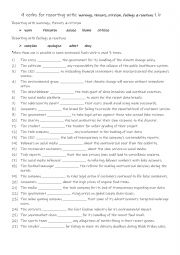
|
9 verbs for reporting with warnings, threats, criticism, feelings & reactions 1 b
First, students need to familiarise themselves with the verbs and check their meaning and use. Then they read the sentences to see which verb is needed to complete the sentence. Each verb is used 3 times! Answers on page 2.
Level: elementary
Age: 8-100
Type:
Downloads: 105
|

|
A2+-B1 Adjectives for the 5 senses 4
Mastering these adjectives helps students describe experiences, express emotions, and write creatively, fostering richer and more impactful communication. First, students need to familiarise themselves with 15 adjectives and check their meaning and use. Then they read the sentences to see which one is needed to complete the sentence. Answers on pag...
Level: intermediate
Age: 10-100
Type:
Downloads: 112
|
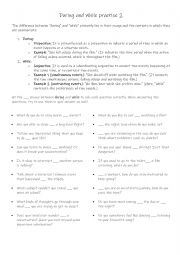
|
During or while Practise 2
Using the the given grammar rules and usage on the page, students complete the questions with the correct preposition or conjunction. This worksheet is mainly for B1 level students although it could be used with strong A2+ students. Once the worksheet has been checked,students in pairs or small groups can ask each other the questions for speaking p...
Level: intermediate
Age: 10-100
Type:
Downloads: 103
|
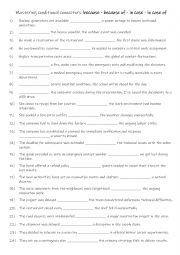
|
B1-B2 Mastering conditional connectors: because - because of - in case - in case of
Learning how to use because, because of, in case, and in case of offers significant benefits for both spoken and written English, as they help students clarify cause, reason, and conditions in different contexts.Mastering these phrases allows students to explain reasons and conditions more clearly, enhance their formal and informal communication, a...
Level: intermediate
Age: 10-100
Type:
Downloads: 109
|
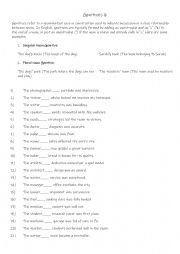
|
A1+-A2 Genitives (6)
This worksheet is suitable for A1+-A2 level students. Genitives refer to a grammatical case or construction used to indicate possession or a close relationship between nouns. Students complete the 20 sentences after reading the rules. Answers on page 2
Level: elementary
Age: 8-100
Type:
Downloads: 131
|
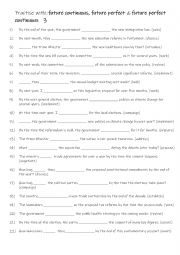
|
B1-B2 Practise with future continuous, future perfect & future perfect continuous 3
Students should learn the future continuous, future perfect, and future perfect continuous tenses to express a variety of future actions and events more clearly. The future continuous describes ongoing actions at a specific future time, the future perfect indicates actions that will be completed before a certain future point, and the future perfect...
Level: intermediate
Age: 10-100
Type: worksheet
Downloads: 135
|
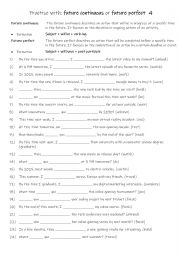
|
A2+-B1 Practise with future continuous or future perfect 4
Understanding these tenses allows students to communicate future goals, schedules, and timelines effectively, enhancing both their speaking and writing skills for academic, professional, and everyday use. First, students need to familiarise themselves with the 2 tenses and their use. Then they read the sentences to work out which tense is needed to...
Level: elementary
Age: 9-100
Type:
Downloads: 111
|
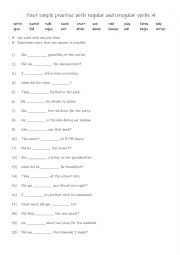
|
Past simple practise with regular and irregular verbs 4
Students first familiarise themselves with the 20 verbs. Then they complete the gap-fill with the correct form of that verb. Answers on page 2.
Level: elementary
Age: 7-100
Type:
Downloads: 141
|
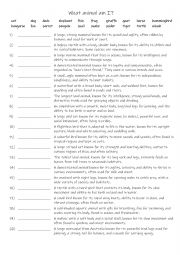
|
A2-B1 What animal am I?
Students familiarise themselves with animal vocabulary in bold. Then they read the definitions and write the name of the animal next to that definition. Answers on page 2.
Level: elementary
Age: 8-100
Type:
Downloads: 111
|
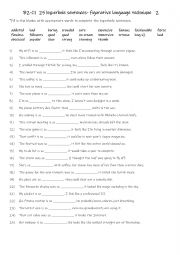
|
25 hyperbole sentences- figurative language technique 2
Learning hyperbole enhances creativity and helps students to express ideas vividly, making their writing more engaging and impactful. It improves communication skills by adding humour or emotional depth, while also fostering a better understanding of cultural and literary nuances. Recognising and using hyperbole sharpens analytical thinking, as stu...
Level: intermediate
Age: 12-100
Type:
Downloads: 124
|
|
|
|
|












